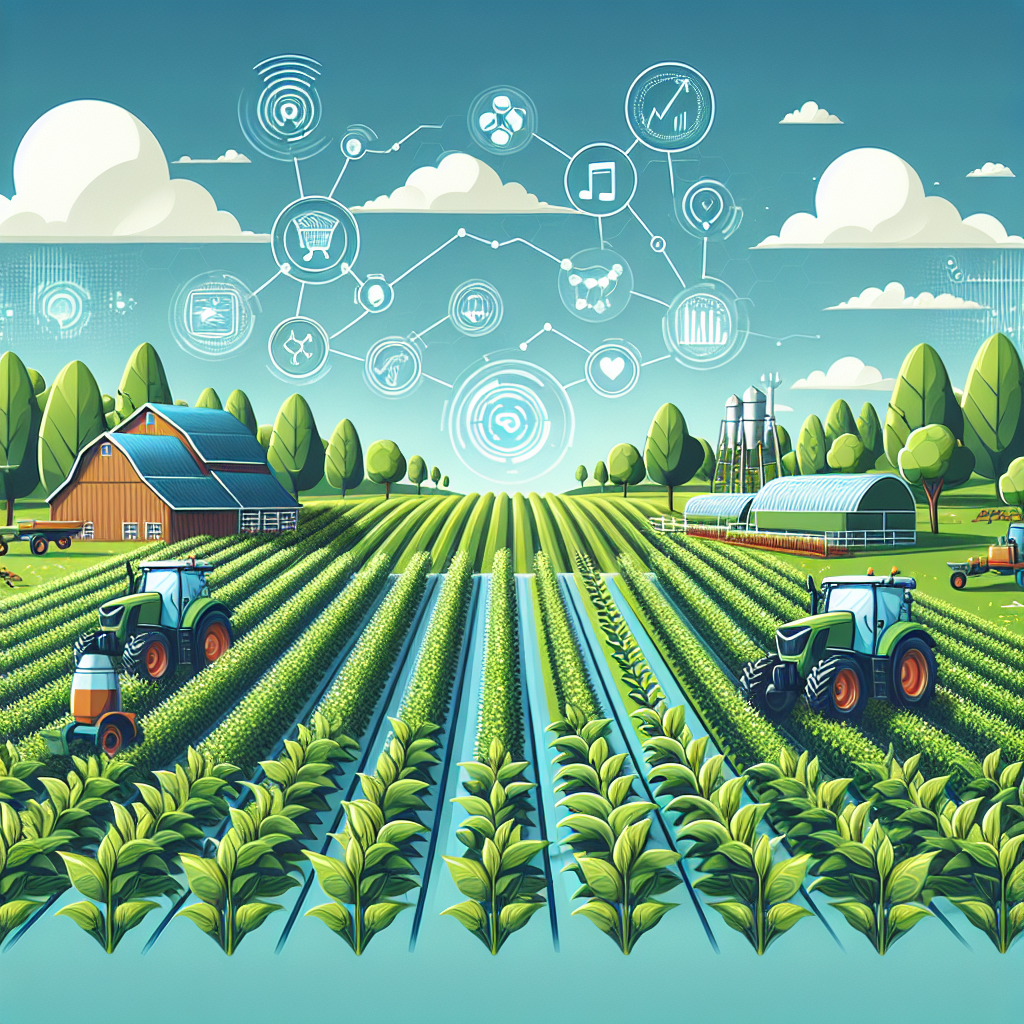Sustainable agriculture has become a major focus in recent years as the world grapples with the challenges of feeding a growing population while also protecting the environment. Traditional farming practices have often been criticized for their reliance on harmful chemicals, excessive water usage, and soil degradation. In response to these concerns, a new wave of innovation is sweeping through the agricultural industry, with the integration of artificial intelligence (AI) technology leading the charge.
AI is revolutionizing farming practices in what many are calling Sustainable Agriculture 2.0. By harnessing the power of AI, farmers are able to optimize their operations, reduce waste, and increase productivity in ways that were previously unimaginable. From precision farming techniques to automated decision-making processes, AI is transforming the way we grow our food and manage our land.
One of the key benefits of AI in agriculture is its ability to collect and analyze vast amounts of data in real time. By using sensors, drones, and other IoT devices, farmers can gather information on everything from soil quality and moisture levels to crop health and pest infestations. This data is then fed into AI algorithms that can identify patterns, predict outcomes, and make recommendations for action.
For example, AI-powered drones can fly over fields and take high-resolution images that are analyzed to detect areas of stress or disease in crops. This allows farmers to target specific areas for treatment, reducing the need for blanket applications of pesticides or fertilizers. Similarly, AI algorithms can analyze soil samples to determine the best planting techniques and crop rotations for maximizing yields and minimizing environmental impact.
Another major application of AI in agriculture is precision farming. By using GPS technology and AI algorithms, farmers can create detailed maps of their fields that show variations in soil type, moisture levels, and other factors. This allows them to tailor their planting, irrigation, and fertilization practices to specific areas, optimizing resource usage and minimizing waste.
AI can also help farmers make better decisions in real time. By integrating weather data, market prices, and other external factors into their algorithms, AI systems can provide recommendations on when to plant, harvest, or sell crops for maximum profit. This can help farmers mitigate risks and improve their bottom line, ultimately leading to a more sustainable and profitable operation.
In addition to improving efficiency and productivity, AI in agriculture also has the potential to reduce the environmental impact of farming practices. By using AI to optimize resource usage, farmers can minimize water consumption, reduce greenhouse gas emissions, and protect biodiversity. This not only benefits the environment but also helps farmers meet the growing demand for sustainably produced food from consumers and regulators.
Overall, Sustainable Agriculture 2.0 powered by AI offers a promising vision for the future of farming. By harnessing the power of technology to improve efficiency, productivity, and sustainability, farmers can meet the challenges of feeding a growing population while also protecting the planet for future generations.
FAQs
Q: How is AI being used in agriculture?
A: AI is being used in agriculture in a variety of ways, including precision farming, data analytics, and decision support systems. By using AI algorithms to analyze data from sensors, drones, and other devices, farmers can optimize their operations, reduce waste, and increase productivity.
Q: What are the benefits of AI in agriculture?
A: The benefits of AI in agriculture include improved efficiency, productivity, and sustainability. By using AI to optimize resource usage, farmers can reduce waste, minimize environmental impact, and increase profitability. AI also allows farmers to make better decisions in real time, leading to more successful and sustainable farming practices.
Q: Is AI replacing human labor in agriculture?
A: While AI is automating some tasks in agriculture, such as planting and harvesting, it is not replacing human labor entirely. Instead, AI is augmenting human capabilities by providing farmers with valuable data and insights that can help them make better decisions and improve their operations.
Q: What are the challenges of implementing AI in agriculture?
A: The challenges of implementing AI in agriculture include cost, data quality, and technical expertise. AI technology can be expensive to deploy and maintain, and farmers may struggle to collect and analyze high-quality data. Additionally, not all farmers have the technical skills needed to effectively use AI in their operations.
Q: What is the future of AI in agriculture?
A: The future of AI in agriculture looks bright, with continued advancements in technology and increasing adoption by farmers around the world. As AI becomes more accessible and affordable, we can expect to see even greater improvements in efficiency, productivity, and sustainability in the agricultural industry.

